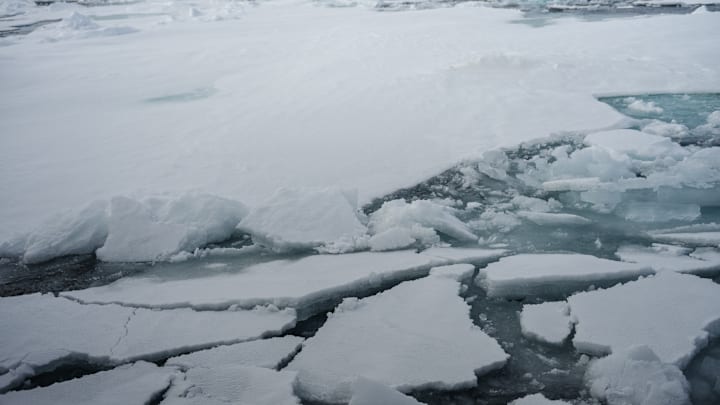The Impact of Climate Change on Polar Regions

Climate change, driven by the accumulation of greenhouse gases in the atmosphere, is profoundly affecting the polar regions of the Earth. The Arctic and Antarctic are experiencing some of the most rapid and dramatic changes, with significant implications for global climate, ecosystems, and human societies. Understanding the impact of climate change on polar regions is crucial for addressing the broader challenges of environmental sustainability and resilience.
The Arctic region is warming at more than twice the global average, a phenomenon known as Arctic amplification. This rapid warming is leading to the loss of sea ice, with the extent and thickness of Arctic sea ice decreasing significantly over the past few decades. The reduction in sea ice not only affects the habitat of polar bears, seals, and other ice-dependent species but also has broader climatic implications. Sea ice reflects sunlight, helping to regulate the Earth's temperature. As ice melts, darker ocean water is exposed, absorbing more heat and accelerating the warming process in a feedback loop.
The loss of sea ice also affects ocean circulation patterns and weather systems. The melting of Arctic ice contributes to the influx of fresh water into the North Atlantic, potentially disrupting the thermohaline circulation, a major driver of global ocean currents. Changes in ocean circulation can impact marine ecosystems, fisheries, and climate patterns far beyond the Arctic. Additionally, the reduction in sea ice can influence weather systems, leading to more extreme weather events in the Northern Hemisphere, such as cold snaps, heatwaves, and shifts in precipitation patterns.
Permafrost, the permanently frozen ground found in the Arctic, is also thawing due to rising temperatures. The thawing of permafrost releases greenhouse gases, such as carbon dioxide and methane, which have been trapped in the frozen soil for millennia. This release further exacerbates climate change, creating a feedback loop that accelerates warming. Thawing permafrost also affects infrastructure, such as roads, buildings, and pipelines, leading to increased maintenance costs and challenges for communities in the Arctic.
In the Antarctic, climate change is contributing to the melting of ice shelves and glaciers, particularly in the West Antarctic Ice Sheet. The collapse of ice shelves, which act as barriers holding back glaciers, can lead to accelerated glacier flow into the ocean, contributing to sea level rise. The melting of the Antarctic ice sheet is a significant concern for global sea level rise, with potential impacts on coastal communities, infrastructure, and ecosystems worldwide.
The impact of climate change on polar regions also extends to biodiversity and ecosystems. The Arctic is home to a unique array of species, including polar bears, Arctic foxes, walruses, and migratory birds. These species are adapted to the harsh and icy conditions of the Arctic, and the loss of sea ice and changes in habitat are threatening their survival. Similarly, Antarctic ecosystems, such as the Southern Ocean and its krill populations, are experiencing changes in temperature and ice cover, affecting the species that depend on them, including penguins, seals, and whales.
Indigenous and local communities in the Arctic are particularly vulnerable to the impacts of climate change. These communities rely on the environment for their livelihoods, cultural practices, and subsistence. Changes in sea ice, permafrost, and wildlife populations disrupt traditional ways of life and pose significant challenges to food security, health, and infrastructure. Engaging these communities in climate adaptation and resilience efforts is essential for addressing their specific needs and preserving their cultural heritage.
Efforts to mitigate and adapt to climate change in polar regions require global cooperation and coordinated action. Reducing greenhouse gas emissions is critical for slowing the rate of warming and preserving the integrity of polar ecosystems. International agreements, such as the Paris Agreement, play a crucial role in setting targets and promoting action to address climate change. In addition to mitigation, adaptation strategies are necessary to build resilience in polar regions. This includes monitoring and research to improve our understanding of polar climate processes, developing infrastructure that can withstand changing conditions, and supporting the livelihoods and cultural practices of indigenous communities.
In conclusion, climate change is having profound and far-reaching impacts on the polar regions, affecting sea ice, permafrost, ice sheets, biodiversity, and human communities. The rapid changes in the Arctic and Antarctic have significant implications for global climate, ecosystems, and societies. Addressing the challenges of climate change in polar regions requires a comprehensive and collaborative approach, involving mitigation, adaptation, and resilience-building efforts. By understanding and responding to the impacts of climate change on polar regions, we can contribute to the sustainability and health of the entire planet.